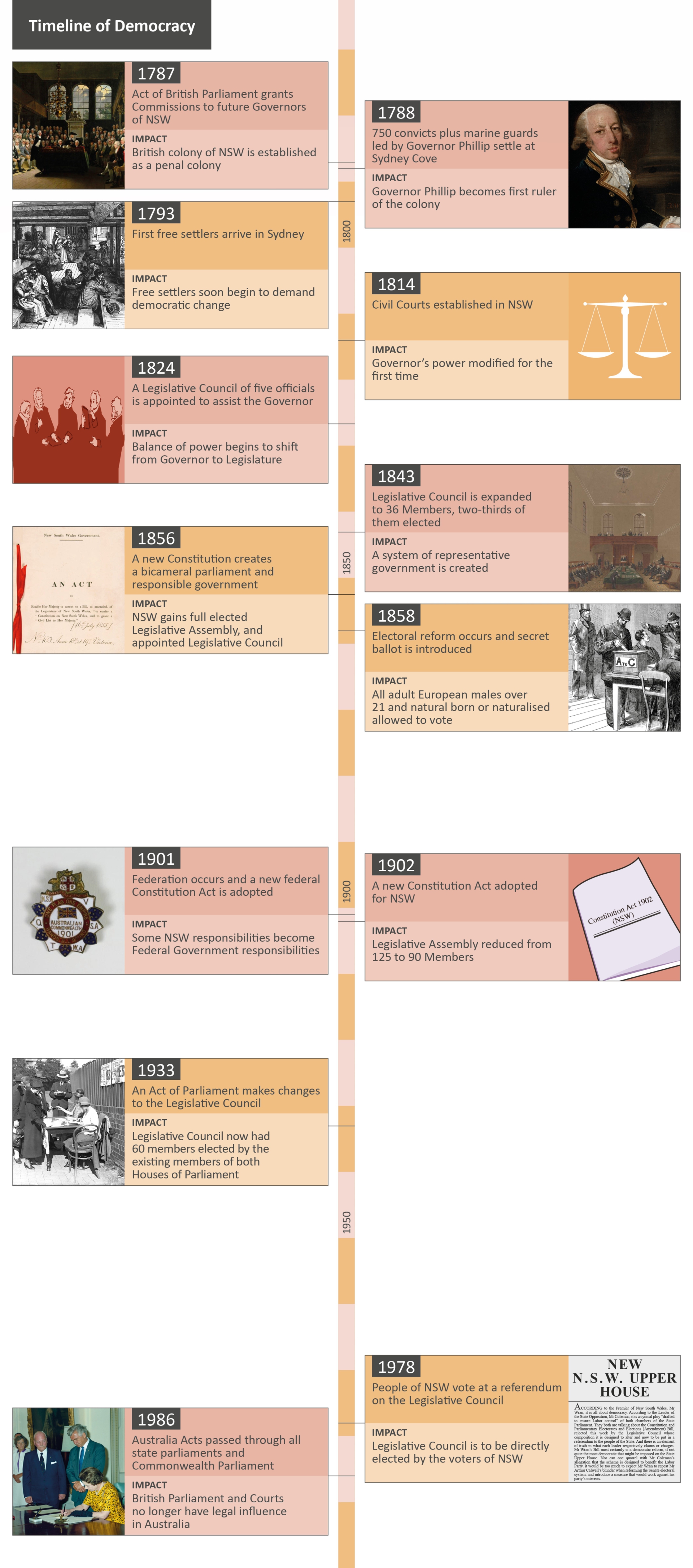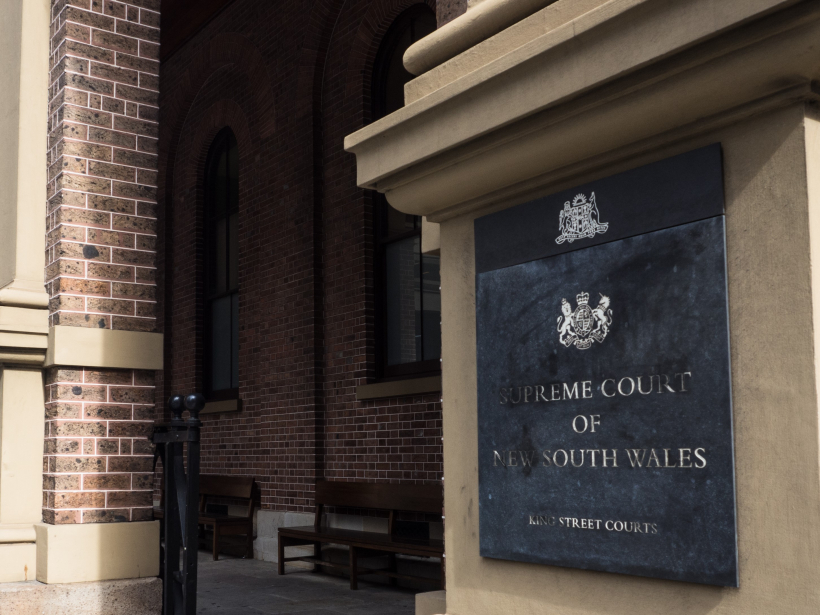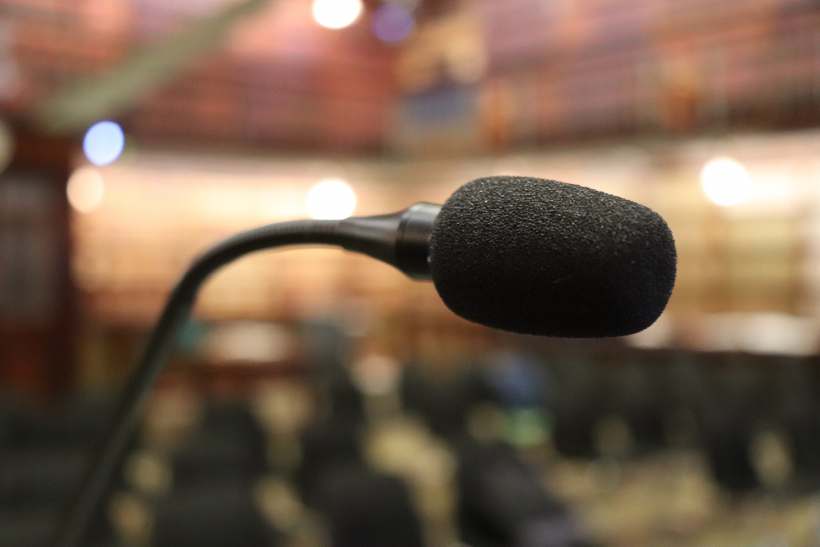What Will I Learn
- How democracy developed in early NSW into the system we have today
- How the Australian Constitution was created
Democracy and the NSW Colony
The British colony of New South Wales was established in 1788 as a penal colony, meaning it was a place where convicts were sent as punishment for their crimes.
The first settlement, at Sydney, consisted of about 750 convicts and their Marine guards and officers, led by Governor Arthur Phillip. As the military Governor of New South Wales he was the absolute ruler, the only power superior to him being the British Parliament at Westminster in England, nearly 20,000 kilometres and 8 months away by sea. In this new society democracy had no place.
Before the Europeans arrived the area had been inhabited by indigenous Aboriginal peoples. The European settlers disregarded the Aboriginals’ rights to their traditional lands and most of the indigenous people of the Sydney region either died from introduced diseases, were killed by the new arrivals or were forced to leave the area.
What happened next?

Image Credits
The House of Commons, 1793–1794, Karl Anton Hickel (1745–1798) National Portrait Gallery, London
Married couples’ accommodation in steerage, by unknown artist, taken from the Illustrated London News, 13 April 1844.
Captain Arthur Phillip, [1786] / painted by Francis Wheatley, Mitchell Library, State Library of New South Wales
Illustration by NSW Parliament Education Office
Illustration by NSW Parliament Education Office
First meeting of the NSW Legislative Council in Parliament House, 1843 (chamber now the Legislative Assembly) Jacob Janssen
New South Wales Constitution Act 1855 (UK), House of Lords Record Office
Polling Booth Interior, Melbourne, David Syne & Co, State Library of Victoria
Badge – Australian Commonwealth, 1901 Photographer: Marita Dyson Source: Museums Victoria
The Newcastle Sun 1933 , published by Sun Newspapers, digitised by The University of Newcastle (Australia)
Recreation by NSW Parliament Education Office
Queen Elizabeth II signs the Proclamation of the Australia Act on 2 March 1986 at Government House, Canberra, with David Reid, Secretary to the Executive Council (left) and Prime Minister Bob Hawke. Image courtesy of the National Archives of Australia. NAA: A8746, KN18/3/86/33




